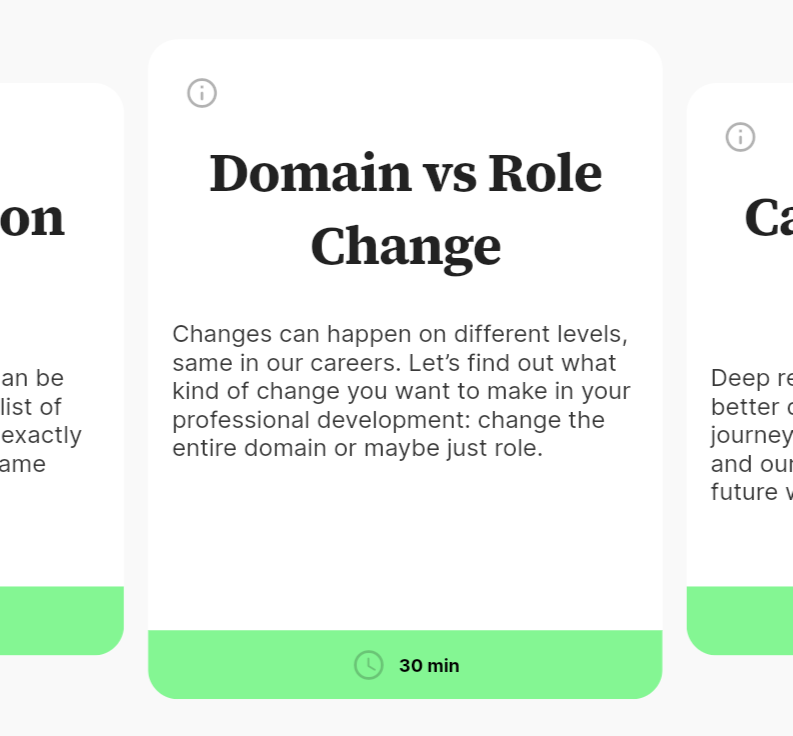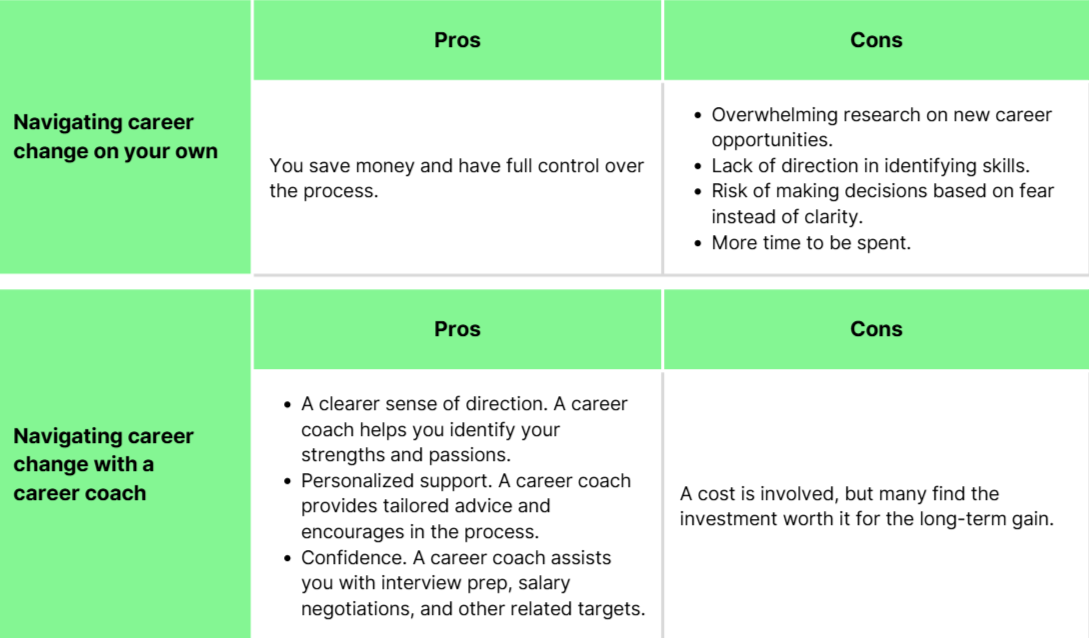Have you ever had a goal that you were excited about but somehow never reached? We have all been there. Setting goals is the easy part. Achieving them? That is where many get stuck. The reason might not be a lack of effort but a lack of planning. Without a clear plan, goals often stay just like that: ideas in our heads. With a plan, you get structure by breaking big goals into small, actionable steps. You stay focused and resistant to distractions. You tackle challenges.
If struggling with procrastination and missed chances seems familiar, think of a career plan. Yet another argument to create one is when you regularly underestimate what it takes to succeed. In the article, we will find out how to achieve a desired career path as an employee. As a manager, learn about your part in the article’s final section.
What is a career plan?
A career plan is a roadmap that outlines your professional goals with the steps to achieve them. To move forward with goals, you define a timeline and build up the right skills along the way. With a career plan, you know where to start, stay on track, and measure progress.
Why a career plan is so important?
Mapped-out targets bring clarity, drive growth, and motivate by uncovering opportunities and skills needed down the line. Here, purpose and achievements are not only in mind, but they are visible.
5 steps to create a career plan
Reflections on current status and future career
1. Self-assessment
Asking yourself questions is present at every stage of creating a career plan, but the following are essential to begin with:
- What are my life and work values, interests, and aspirations? What work format do I prefer?
Recommended assessment on the Amy human potential platform: Your Work Values and Your Life Values to go through core groups. - What are my strengths and weaknesses?
Recommended assessment on the Amy human potential platform: Personal SWOT Analysis to clarify your talents and growth areas in addition to opportunities and threats for your role.
2. Goals
Set SMART career goals. SMART goals are Specific, Measurable, Achievable, Relevant, and Time-bound:
- Short-term: Learn a new tool relevant to your job in 2 months.
- Long-term: Transition to a managerial role within 5 years.
The questions for you to outline aims are:
- Where do I see myself in half a year or 1 year for short-term goals? In 5 years for long-term goals?
Recommended assessment on the Amy human potential platform: Career Pathway Reflections to define a clear picture of where you want to be in 5 or 10 years from a career perspective. - What resources do I need to achieve these goals?
3. Research
Take a closer look at potential roles, projects, or industries that appeal to you and fit your goals. Dive into the specifics of various fields, discover emerging trends, and consider how different roles or projects can help you grow professionally. The more you explore, the clearer your career path will become.
4. Skill development
Consider your expertise and identify skill gaps.
- What skills do I use most of all?
- What skills do I wish to use more? What to gain?
- What skills do my desired roles require?
- How do my current skills compare?
Recommended assessment on the Amy human potential platform: Skills Gap Analysis and Skills Development Plan to review what capabilities you already own and what you expect.

Action plan
5. Mapping a career path
Mapping a career path is the final step in crafting a career plan and means not just knowing where you want to go but also understanding how to get there. You create a framework for action and long-term growth.
Sample of a career plan
Let’s take Mike, a software engineer, as an example of how goals can be divided into steps that fit aspirations.
- Break goals into actionable steps. Instead of aiming broadly for a senior role or a management position, focus on smaller, specific tasks that will lead you there.
Mike aims to become a senior software engineer, that’s why manageable pieces for his goal are:
- Contribute to more complex projects within the team.
- Mentor junior developers to build leadership capabilities.
- Learn advanced skills like designing scalable systems.
For these steps, Mike needs to add:
- Resources: Access to online courses on Coursera. Websites like LeetCode and Codewars for practicing coding challenges. Development environment: PyCharm, Git, and AWS. Guidance from a career coach, senior developers, or mentors to gain insights on skills improvement and career progression.
- Success criteria: Completing courses. Moving into a more senior role. Receiving positive feedback from managers on improved performance and leadership.
- Barriers (if any): Balancing work and upskilling.
- Incorporate strengths, skills, and opportunities. Revisit the skills and opportunities you identified earlier. This is where you connect what you have with what you need. Focusing on building your skills while actively seeking opportunities ensures you are applying your learning.
- List the skills you already have: Mike is proficient in Python and Celery.
- Identify gaps: His target role requires cloud computing knowledge and leadership experience, so Mike makes those areas a priority.
- Align your learning with real-world opportunities: Mike should enroll in an AWS certification program to build cloud expertise and volunteer to lead a small project within his current team.
- Create a timeline for your milestones. A timeline adds structure to your plan and helps you stay on track. Start by listing your goals and assigning realistic deadlines to each milestone. Review and update your plan when you face unexpected challenges and progress.
Mike’s timeline looks as follows:
- Month 1–2: Learn FastAPI and build a small personal project.
- Month 3–6: Contribute to an open-source project using FastAPI.
- Month 7–12: Lead a small team project to showcase leadership skills.
- Year 2: Apply for senior roles while continuing to grow in cloud computing knowledge.

Evaluation to make your plan work for you
- Use career mapping tools like progress charts to visualize your career path.
- Share your plan with a manager, mentor, or a close person to hold you accountable.
- Schedule regular check-ins to evaluate your progress.
- Be ready to tweak your plan as new opportunities arise.
- Recognize your wins, big or small, to stay motivated.
Common challenges and how to overcome them
- Lack of clarity. Use self-assessment tools or career coach guidance to sharpen your direction. Career coaching empowers you to get started on the right foot and gain confidence. With a career coach, you can create a solid career roadmap and overcome obstacles when hesitant.
- Fear of change. Start small with manageable steps, as big ones may feel overwhelming.
- Balancing work and goals. Use time management techniques, such as blocking dedicated time for self-development.
- Stagnation. Seek new challenges or roles within your organization.
How an HR and L&D manager can assist
- Use self-assessment surveys and platforms for employees, like the Amy human potential platform, to identify their career drivers.
- Prepare Individual Development Plans (IDPs) that include short-term and long-term goals your employees target. Align employee’s goals with organizational objectives in the plan.
- Map out career pathways and career ladders within departments based on employees’ desired roles and skills. Provide resources such as role transition guides, job shadowing, and rotational programs.
- Promote cross-departmental collaborations. Create mentoring programs and peer learning initiatives. Offer internal training programs and online courses. An L&D team might launch leadership training for mid-level managers aiming for executive roles.
Nearly 59% of employees claim they had no workplace training and that most of their skills were self-taught. 85% of employees want to choose training times that fit their schedule. That’s exactly what Amy offers—customized programs that cover microlearning for flexibility, tailored assessments for diverse needs, and on-demand support for teams. - Schedule regular check-ins and annual career discussions. Use performance reviews to adjust career plans. Give constructive feedback to guide employees toward their goals.

If you face low employee engagement in career planning, you can introduce microlearning and career planning tools to boost participation. As an L&D manager, you might use data from learning platforms like Amy to suggest personalized learning paths for employees.
Turn goals into reality with Amy
Goals need structure to come to life. Otherwise, they often stay out of reach or in the ‘maybe someday’ pile. A defined, thorough career plan benefits both individuals and organizations. For employees, it provides clarity and purpose. For managers, it promotes a supportive environment where talent can thrive. While employees take ownership of their aspirations, HR and L&D managers give tools and resources to turn those aspirations into achievements.
Start by reflecting on where you are now and where you want to be. The first step will set you on the path to big accomplishments. And Amy, as a human potential platform, is here for you to ease this path.






